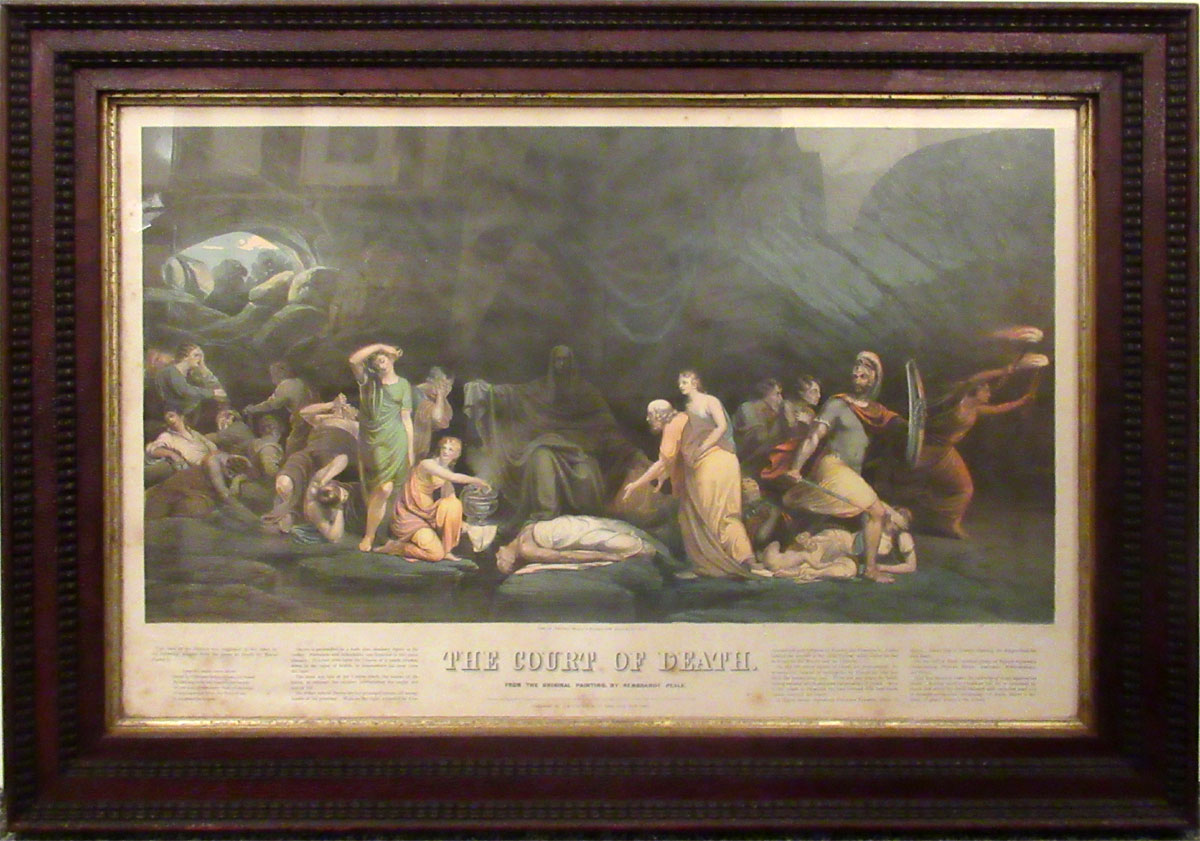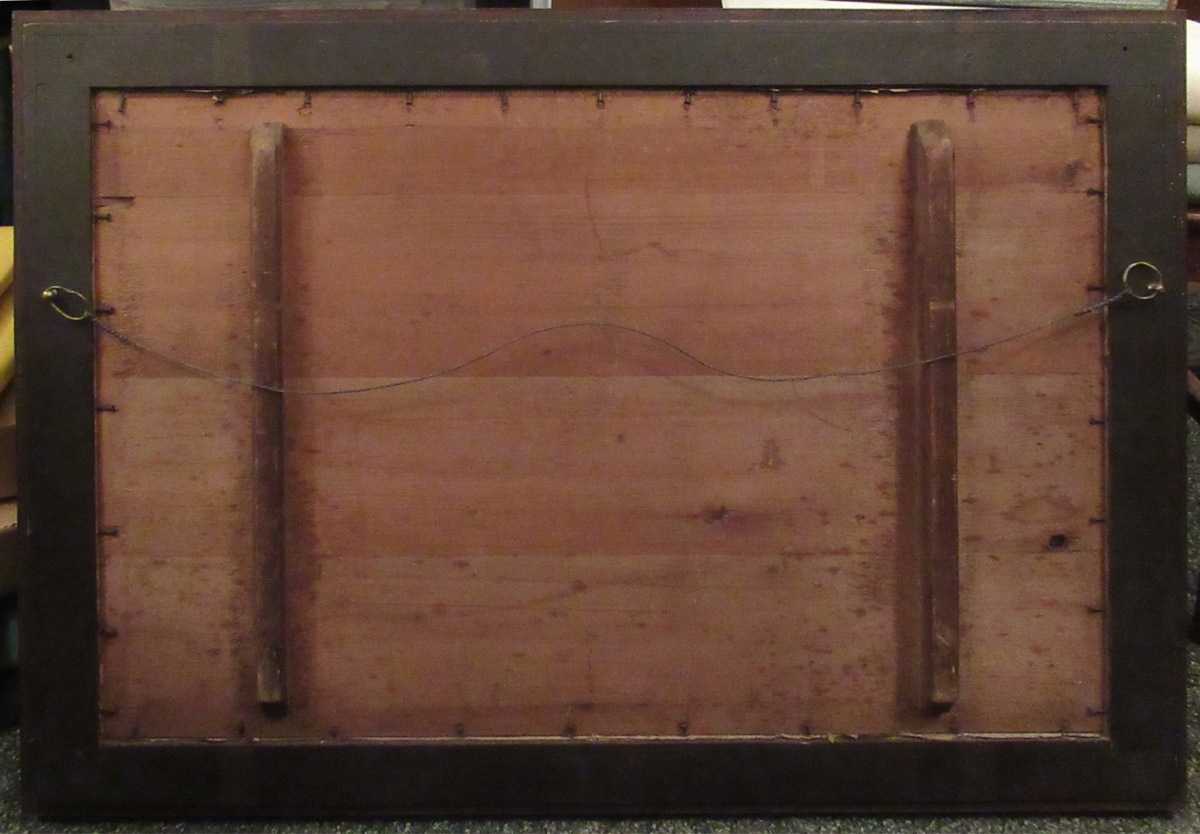$350.00
Description: We offer a large print of Rembrandt Peale’s moody, allegorical painting “The Court of Death” lithographed by Sarony, Major and Knapp. The image 15 ¼” x 26 ¾” and it is housed in an excellent early 19th century ripple moulded frame with the outside dimensions 25” x 34”. The text below the image reveals the inspiration for the painting: the poem “Death” by the Anglican bishop Porteus. Item #PR00344. Rembrandt Peale (1778–1860) was a prolific American portrait artist and museum keeper. His father, Charles Willson Peale, and three of his brothers were also accomplished artists. His work had broad appeal and his patrons included many Americans of note including: George Washington, Thomas Jefferson, Rubens Peale, John Marshall, John C. Calhoun, Charles Mathews, Jean-Antoine Houdon, DeWitt Clinton, and Thomas Sumter. Condition: Good untouched condition, not examined out of frame. Original backboard, picture wire and nails indicate this piece has remained untouched since the 19th c.
Description
Description: We offer a large print of Rembrandt Peale’s moody, allegorical painting “The Court of Death”, lithographed by Sarony, Major and Knapp.
The image measures 15 ¼” x 26 ¾” and is housed in an excellent early 19th century ripple moulded frame with the outside dimensions 25” x 34”. The text below the image reveals the inspiration for the painting… the poem “Death” by the Anglican Bishop Porteus. Item #PR00344.
Rembrandt Peale (1778–1860) was a prolific American portrait artist and museum keeper. His father, Charles Wilson Peale, and three of his brothers were also accomplished artists. His work had broad appeal and his patrons included many Americans of note including: George Washington, Thomas Jefferson, Rubens Peale, John Marshall, John C. Calhoun, Charles Mathews, Jean-Antoine Houdon, DeWitt Clinton, and Thomas Sumter.
Condition: Good untouched condition, not examined out of frame. Original cradled, chamfered wood backboard, picture wire and nails indicate this piece has remained untouched since the 19th c.






